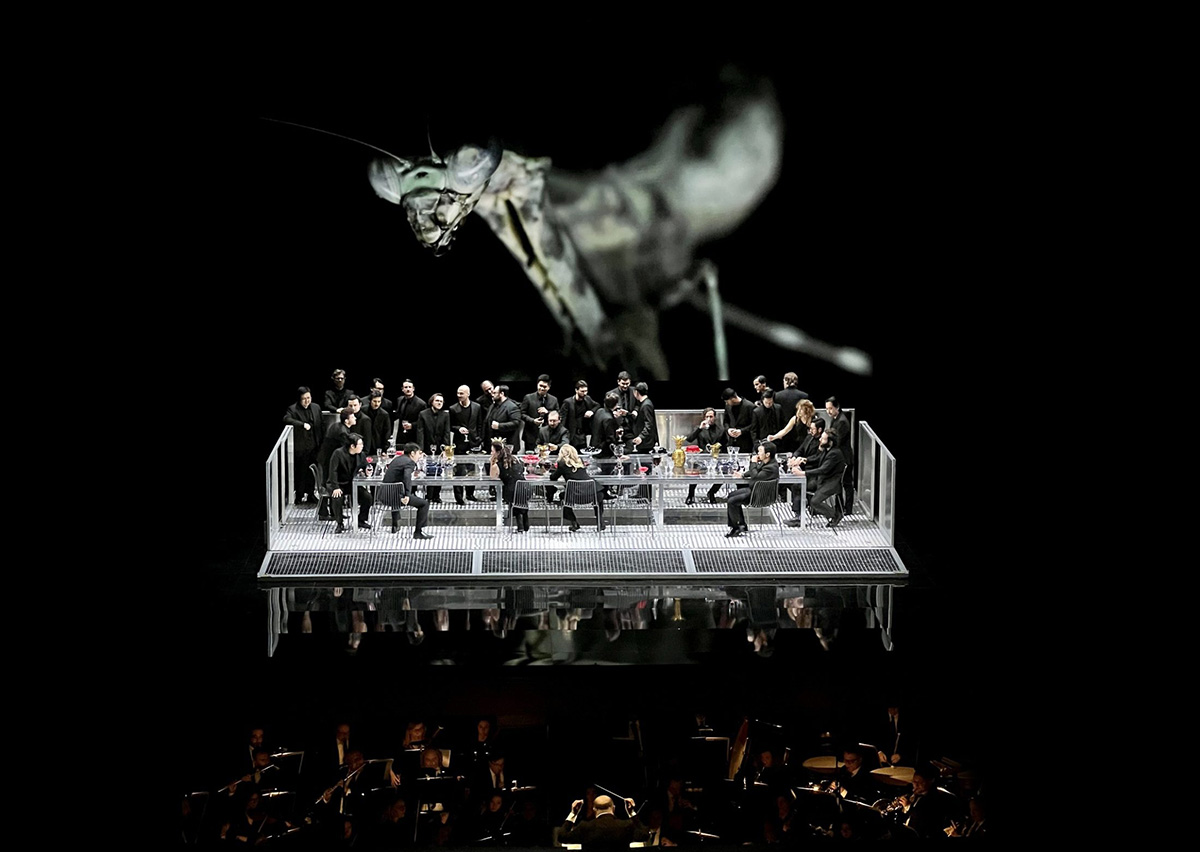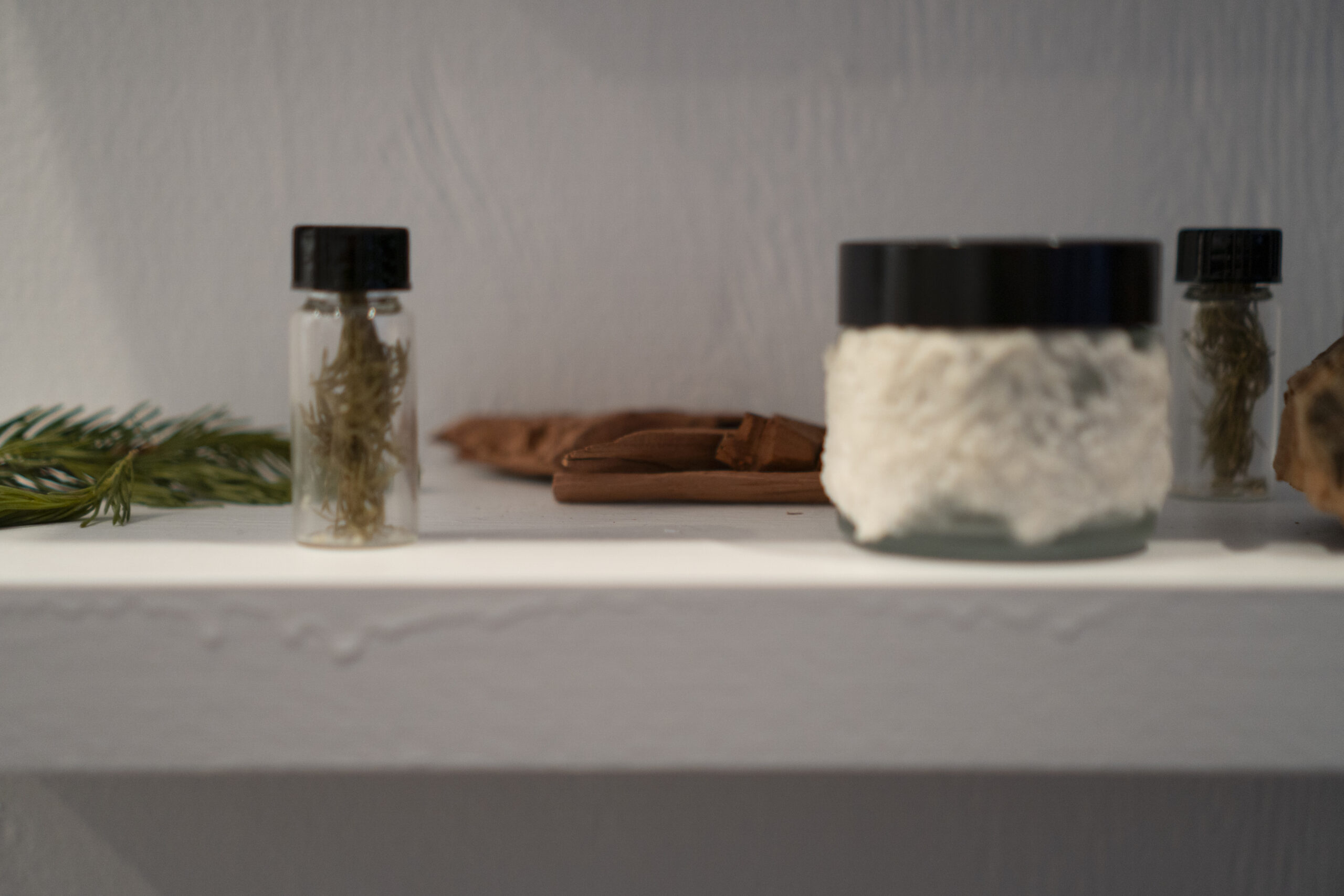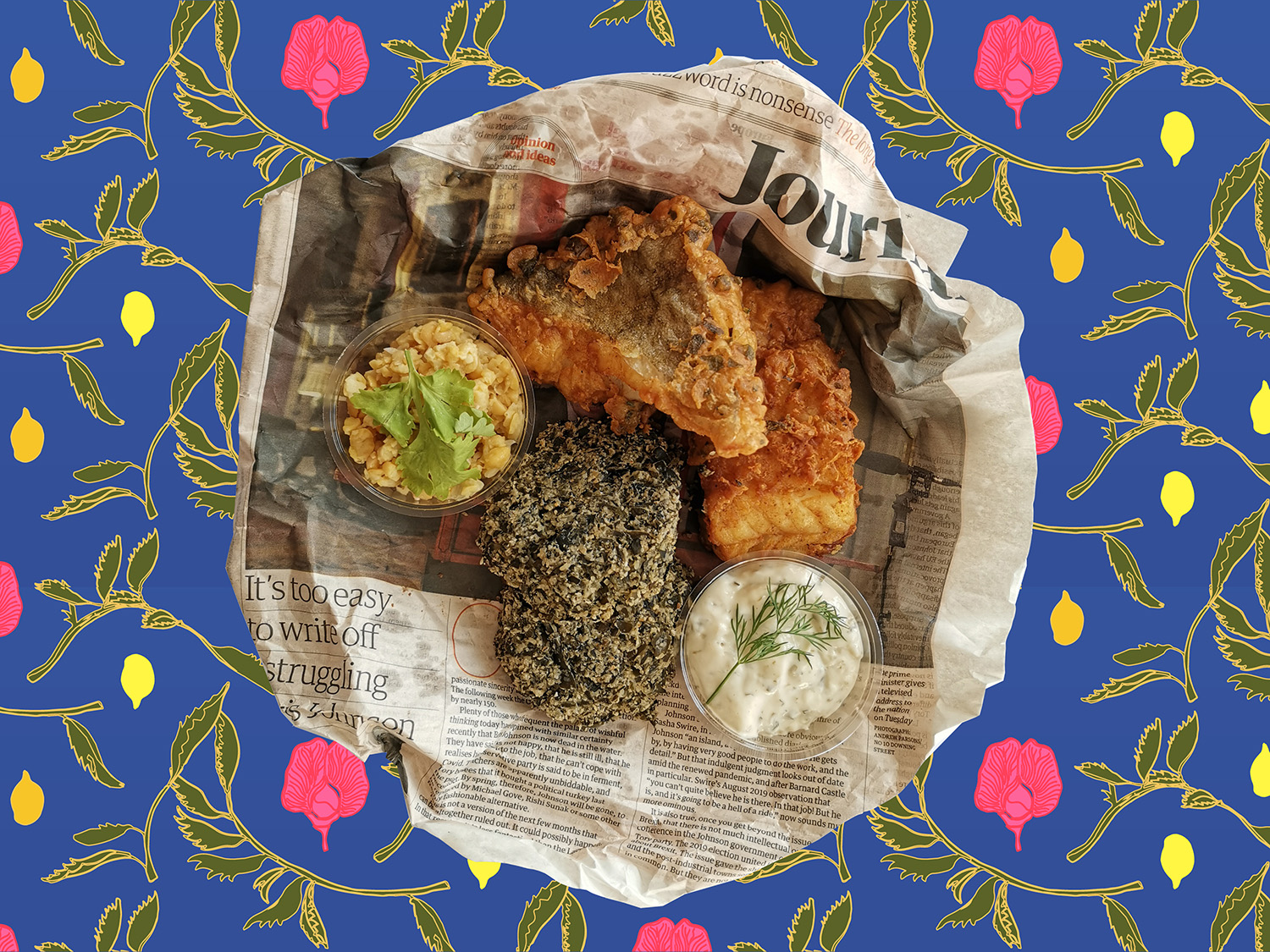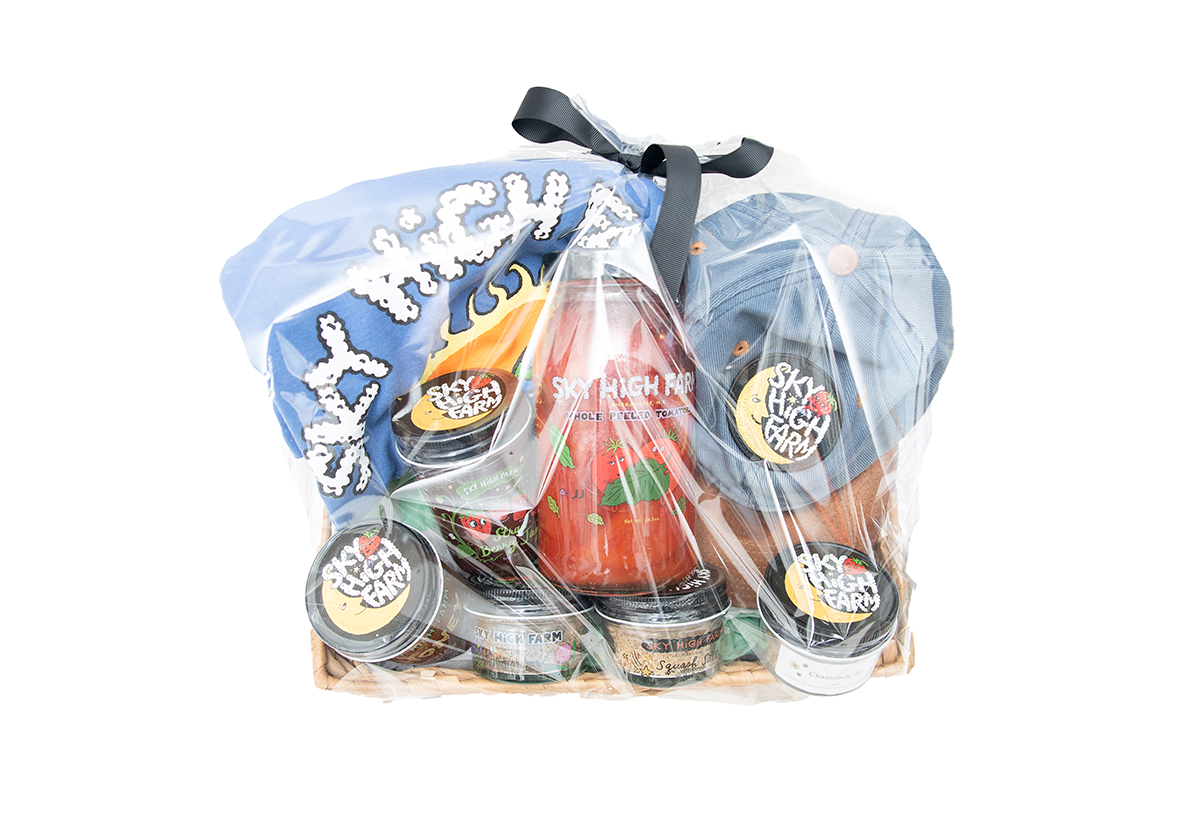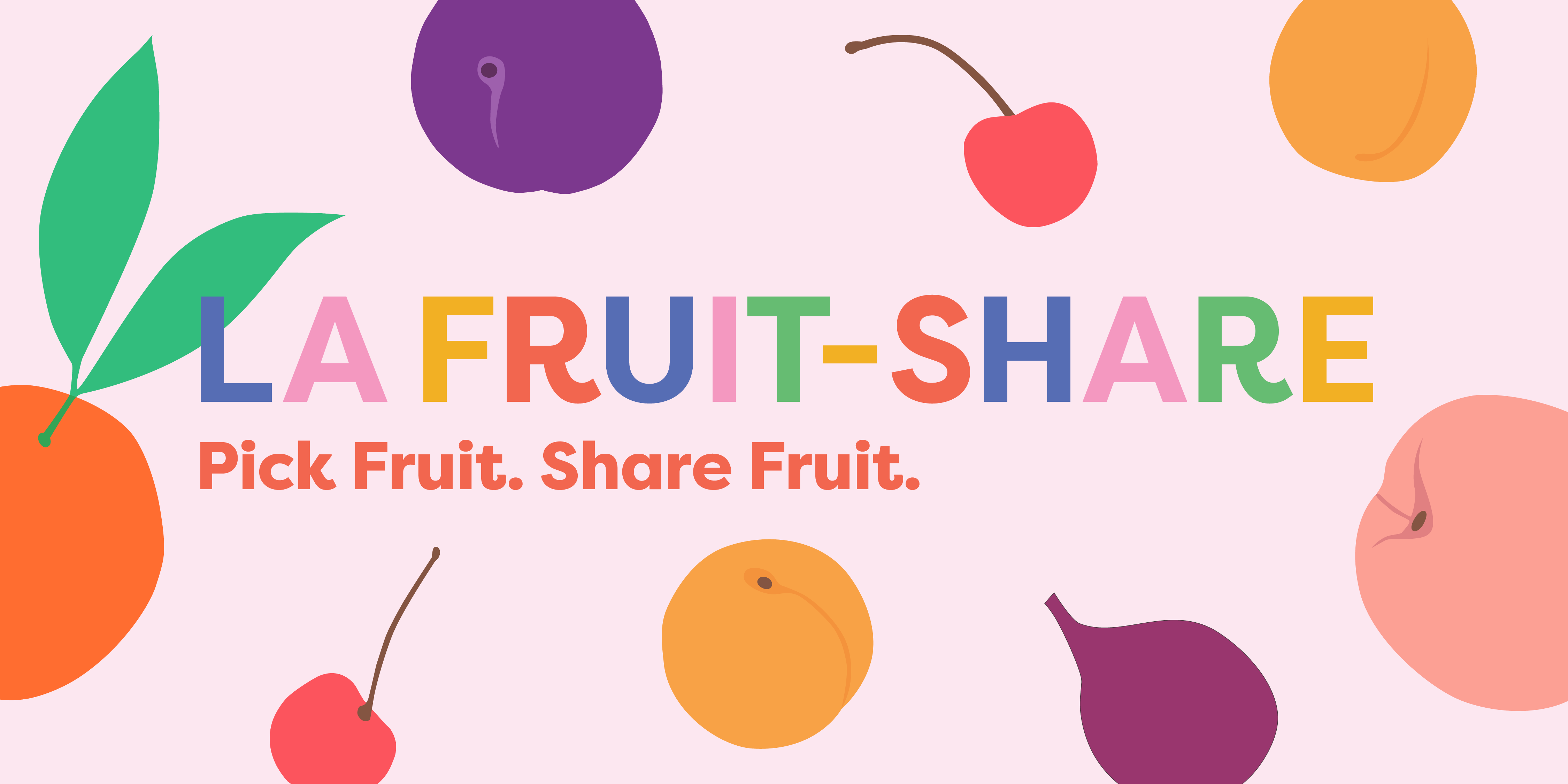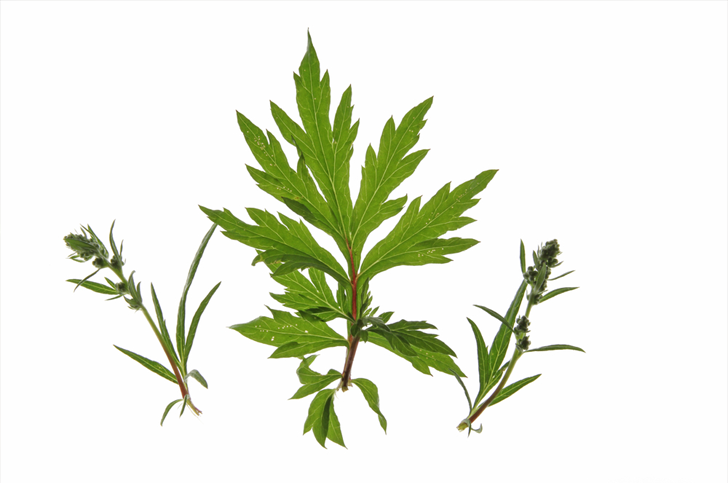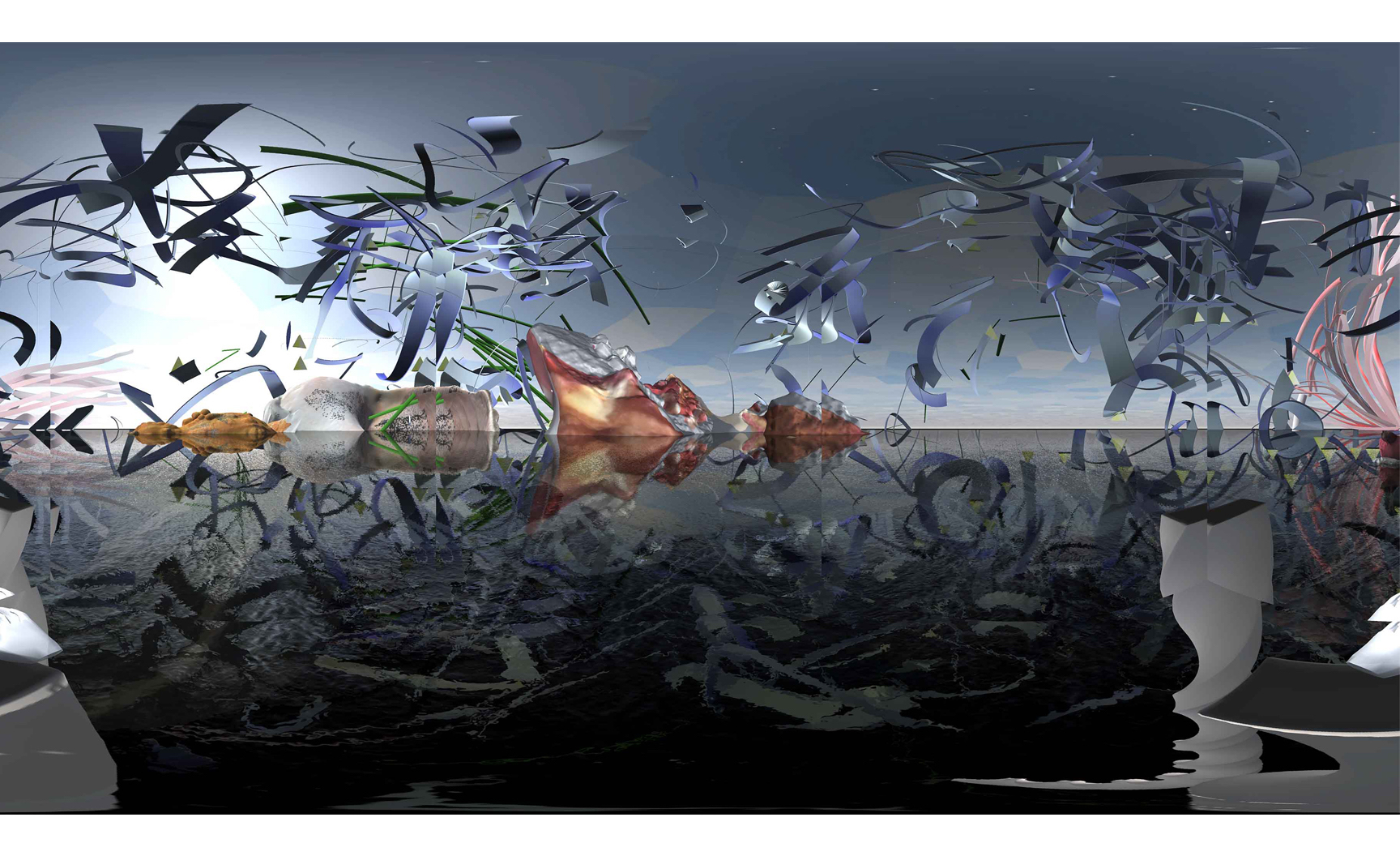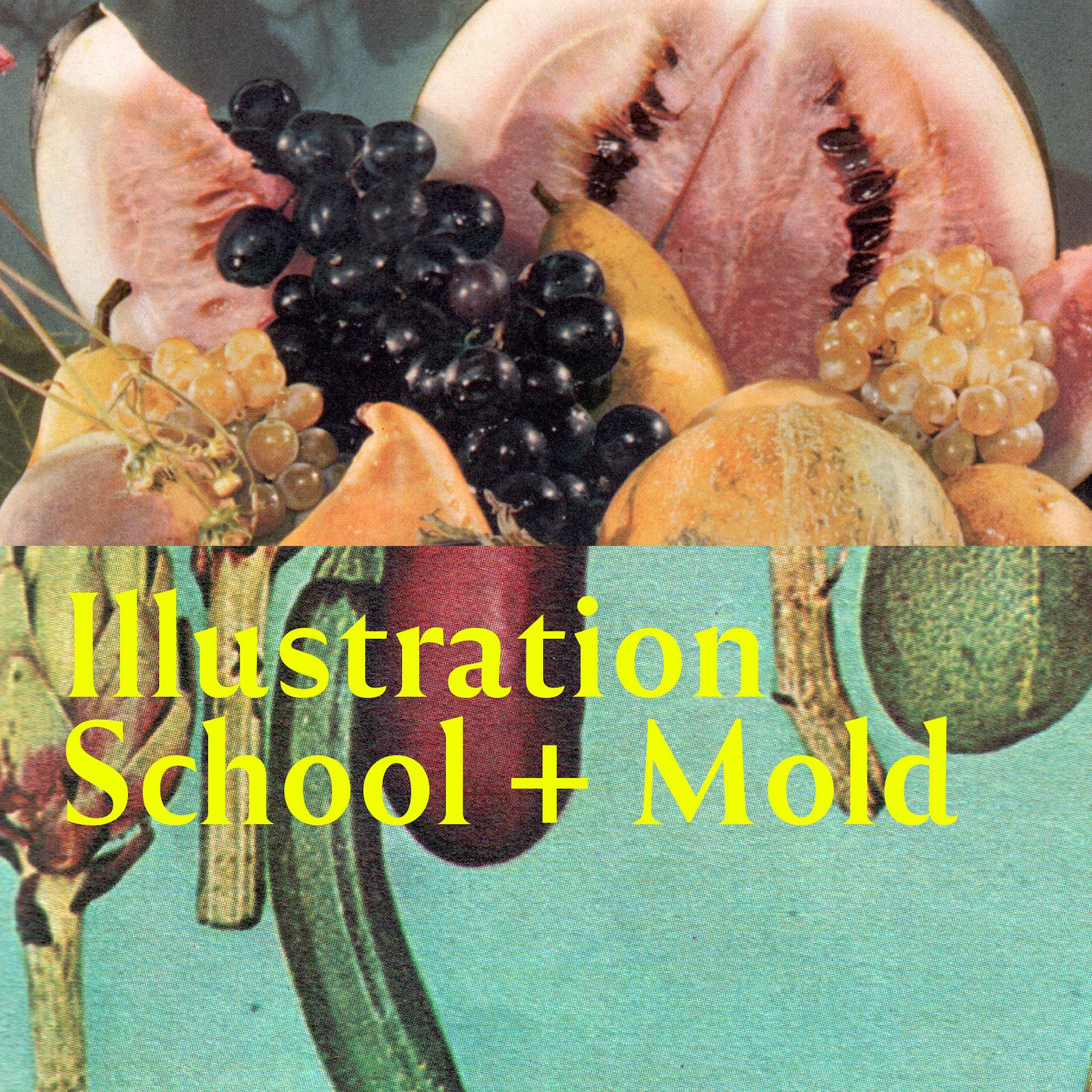This piece is part III of a five-part series by Jen Monroe of Bad Taste and Caroline Maxwell of Wild Dogs International, ‘Balling the Queen: On Honey Bees, Consumption and Collapse.’ Focusing on the plight of pollinators and colony collapse, this series serves as a precursor to their event Balling the Queen: A Dinner Salon Exploring Honeybees, Consumption and Collapse.
To get to the heart of what makes industrial agriculture so precarious–for humans and the environment, but particularly for pollinators–we must begin with monoculture farming, like the 1.33 million acres of almond orchards in California’s central valley. These single-crop systems demand a lot of synthetic inputs, like pesticides, fertilizers, fungicides, irrigation, and imported pollinators, all of which have had detrimental effects to what’s left of their surrounding ecosystems. Currently, the overwhelming majority of farmland in the midwest is endless acres of corn and soybeans—sometimes planted in rotation with each other, but often just corn, year after year. (There are 13.5 million acres of corn in Iowa, taking up a third of the state’s square acreage–just 2% of the state’s tall-grass prairie remains.) To put this into historical contrast, a small, healthy family farm in Iowa pre-WWII might have looked something like this:
A farmer supports a family with around a dozen species of crops and animals. There are horses to help work the land, because tractors are exceedingly rare and expensive. There are pigs, cattle, and chickens, whose manure is used as fertilizer, and who provide meat, milk, and eggs; there might be corn, oats, hay, and alfalfa, some of which is used as animal feed (though the animals graze on grass whenever possible), and there are a handful of other fruits and vegetables: probably a combination of apples, potatoes, cherries, wheat, and plums. With this diversity, a farm could be somewhat self-sufficient: animals could be fed from the land while also working it, fertilizing it, and generating animal products for food; crops could be rotated in and out to maximize what one plot could produce in a year and to maintain healthy soil; a farmer could feed his family and a handful of other people besides; and if the market collapsed for any one crop, there were plenty of other crops to soften the financial blow (Pollan 38).
Here’s where the pollinators come in. Because there are a diversity of crops on the farm, there are at least a few different periods of blooming throughout the growing season, meaning there are extended periods of food available for foraging bees. Also, since the farm is small enough to be worked by a few people without the help of modern equipment, it’s possible for bees to venture off the farm to forage on wild flowers if they need to. Bees regularly fly over three miles from the hive to forage, and the area surrounding the farm hasn’t been converted to an endless monoculture or had its watershed decimated by pesticide or fertilizer runoff. In short, there is plentiful and diverse food, both farmed and wild, to keep bees healthy all year round. The pollinators in question here might be domesticated honey bees, kept either by the farmer or by a bee keeper, but they might also be a combination of native pollinators: wasps, flies, ants, butterflies, moths, hummingbirds, bats, even mosquitoes, and of course, native bees. Any number of America’s 4,000 known species of native bees could be responsible for aiding plant reproduction and maximizing crop productivity. That’s the thing—because North America’s ecosystems didn’t evolve with the honey bee, a healthy ecosystem can function perfectly well without them.
Monocultures, though, are a complete distortion of a healthy ecosystem: there is very little that could be considered natural or healthy about them. Never in the natural world would you find endless acres of one plant completely uninterrupted by anything else. Although the broad environmental ramifications of growing food this way are innumerable, monocultures have an outsized effect on honey bees and other pollinators. For starters, pests love monocultures, because once they’ve found a preferred food source, it’s an endless smorgasbord in which they can feast and multiply forever, and there are no companion plants to function as natural pest control. To protect their harvests, farmers ramp up pesticide use. With an enormous harvest of only one crop at stake, and with too much acreage to be able to manually keep tabs on pests, many farmers use pesticides preventatively and liberally rather than remedially and sparingly:
“In some cases, the chemicals aren’t even applied because there is a problem. It has been estimated that up to 44% of soybean and 100% of corn seeds are coated with insecticides prophylactically. This means they are treated regardless of whether there is a pest of concern. Researchers at multiple universities and the U.S. Environmental Protection Agency agree there are few pest problems solved by applying systemic insecticides to the seeds of soybeans. Data also show that the insecticides used as seed treatments are likely harming bees, birds, and aquatic organisms (Black).”
Without wanting to re-open the question of whether pesticides are directly harmful to bees, it’s a less contentious point that pesticides end up in groundwater, which, from a food chain perspective, affects just about every living thing in an ecosystem, most pertinently pollinators, who are already struggling to find enough uncultivated wild forage to live off.
 Soybean harvesting in Campo Verde, Brazil. Photo by Alf Ribeiro.
Soybean harvesting in Campo Verde, Brazil. Photo by Alf Ribeiro.
Mechanized agriculture has been a significant driver of monoculture farming, and many kinds of farming equipment–tractors, combine harvesters, pickers–work more efficiently in a large scale continuous crop on a relatively level landscape. That means no trees, no hedgerows, no cover crops in the winter time, and a significant loss of protection from wind and weather, which means increased vulnerability to erosion. (In California almond orchards, this is taken to a much greater extreme: since the almonds are harvested by being shaken onto the ground and then vacuumed up, the ground beneath the trees must be completely bare of vegetation, stripped down to an immaculate dirt floor. No grass, weeds, or flowers means virtually no habitat for bees.) Valuable topsoil is blown, tilled, or washed away and ends up in bodies of water, where it clouds the water column, making it harder for aquatic plants to get the sunlight they need to live. This harms honey bees, and pollinators in general, because no change in an ecosystem is without consequence: aside from the big-picture delicate balance of the food chain, a contaminated water supply affects soil health and plant health. Many species of solitary bees make their nests in the ground, meaning that they’re unable to live in places that don’t provide both suitable nesting habitat and enough flowers to forage on. Dwindling habitats as a result of development and agriculture mean that increasing amounts of bees are being added to the list of critically endangered species, further compacting the damaged relationship between plants and pollinators:
“A variety of studies from the U.S. and Europe show that habitat adjacent to fields where insecticides are used may be toxic to the pollinators and other beneficial insects that rely on these areas for food and shelter. Projects that place habitat within areas where insecticides are used can have the opposite effect from what’s intended: pollinators and other wildlife can be drawn to what seems to be a place they can thrive, only to be poisoned. On top of the devastating effects on pollinators, installing habitat that is exposed to pesticides is a waste of limited resources. Restoration is expensive, and we should prioritize areas where we know that the habitat will be protected from pesticides and bring greatest benefit to pollinators for the long term (Black).”
 Image courtesy of the USDA National Resources Conservation Service.
Image courtesy of the USDA National Resources Conservation Service.
Back on the farm, growing only one crop without any livestock means that there is no readily available fertilizer, and planting the same thing year after year at unnaturally high density and high yield means that the soil is completely sapped of nutrients, without the restorative benefits of rotational planting. As a solution, industrial fertilizer (which, as an aside, requires significant amounts of fossil fuels to produce) is introduced to alleviate a man-made fertility problem. With so much at stake in a monoculture, some farmers over apply fertilizers as a kind of insurance, much of which the crops are unable to absorb (Pollan 46). The excess evaporates into the air where it acidifies rain and becomes nitrous oxide, an important greenhouse gas. It also seeps into the water table, in the same way that pesticides do, traversing from drainhouse ditches into rivers and eventually oceans. It fertilizes other species along the way, most notably, algae, which blooms so much as a result that it smothers fish, creating hypoxic dead zones that reduce oceanic biomass and biodiversity, because a loss of fish reverberates across the entire food chain. The dead zone in the Northern Gulf of Mexico is currently about the size of Massachusetts. Increased nutrients can also produce carbon dioxide, which acidifies the water, slowing the growth of fish and shellfish, and possibly inhibiting shell formation in bivalve mollusks. (The immediate effects on humans are alarming as well: excess nitrates from fertilizer runoff can end up in drinking water supplies, and research suggests that consuming these nitrates is linked to birth defects related to brain and spinal development as well as bladder and thyroid cancers. It’s especially dangerous for infants: babies that consume formula made with nitrate-contaminated water can develop a potentially fatal condition when the contaminants interfere with the body’s ability to circulate oxygen in the blood, turning the skin blue. Excess nutrients in groundwater also increase the mobility of soluble uranium, which can likewise end up in drinking water supplies.)
And while all of this harms bees of all stripes by compromising water health, soil health, plant health, and habitat availability, the bizarre, unnatural, maximum-intervention world of monocultures poses an even more immediate and direct challenge to bees through nutrition. Unlike the aforementioned small Iowa farm of 100 years ago, it would be impossible for bees—honey bees or native bees—to live year-round on a large monoculture farm in 2019. One crop means one blooming period each year, so there are only a few weeks of food available, and bees require a diverse diet to fulfill their nutritional needs through the spring, summer, and fall: they are designed to forage on many different kinds of flowers throughout the whole growing season. Nor are there wild flowers or natural, ungroomed habitat within their reach, owing to overcultivation, development, and weed killer. There’s just one crop, as far as the eye can see and often as far as the bee can fly, so neither native bees nor honey bees can survive. Without bees, it’s impossible to scale up certain crops like almonds that rely so heavily on pollination. No pollination means no monoculture.
The current solution is to scale bees up as you scale crops up, and to move the bees around in accordance with pollination needs. This isn’t a particularly new idea–ancient Egyptians floated beehives up the Nile to pollinate different crop regions as they bloomed. In the United States, migratory beekeeping began experimentally around 1895, with beekeepers moving their hives short distances around California by wagon to pollinate its enormous diversity of crops:
“Migratory beekeeping is carried on to a limited extent in some of the eastern and central states, more especially along the Mississippi. But in California, with its great variety of agricultural and climatic conditions and an exceptionally long season during which nectar-secreting flowers are available in one area or another, migration has assumed really important dimensions…Before 1895 a few beemen moved their apiaries from sage and wild buckwheat ranges to lima bean fields in dry years to avoid the expense of feeding. Soon after 1985 the practice became rather common in Ventura and Los Angeles counties. Hundreds of colonies were hauled from 20 to 40 miles on specially constructed wagons drawn by four or six horses. The moves were made at night in order to avoid the midday heat and consequent softening of the comb and smothering of the bees. Some apiaries were moved a few miles from sage to wild buckwheat at higher elevations in the coast ranges. It was the general opinion at that time that migrations were worthwhile only in case the sage crop failed (Zierer 260-269).”
But between the invention of the tractor, the construction of the interstate highway beginning in 1956, government subsidization of gluts of cheap commodity crops, the need to feed more people with fewer farmers, convenience culture, and the intercession of a slew of industries selling industrial equipment, pesticides, fertilizers, and GMO seeds, monocropping took off, and with it, the need for pollination on-demand, since pollination requirements could no longer be met by local bees. Both monocropping and commercial migratory beekeeping would be impossible without the other; the two practices have grown and developed in tandem.
 Scrap candy placed in a bee holding yard to distract the bees and minimize hives robbing each other’s honey supplies. Image courtesy of Sideline Beekeeping.
Scrap candy placed in a bee holding yard to distract the bees and minimize hives robbing each other’s honey supplies. Image courtesy of Sideline Beekeeping.
As the monolith of Big Ag continues to expand and industrialize, commercial beekeepers have been less able to make a living selling their bees’ honey: too much cheap honey gets imported from China and Argentina for Americans to compete. So the rise in demand for pollination services has been a welcome one for beekeepers struggling to survive on the global honey market. These days, migratory beekeeping takes place on a national scale, not just in California. A commercial beekeeper and their hives might start their year in California to pollinate almonds, then move to Florida for melons, New York for apples, Massachusetts for cranberries, Maine for blueberries, and the eastern shore for cucumbers. For each stop, a beekeeper has to pack up their many thousands of hives en masse and load them onto semi trucks, where they endure days-long truck rides and long waits in holding yards upon arrival, in which millions of bees die every year.
 Migrator beekeeper on a truckload of hives. Photo courtesy of CA Department of Pesticide Regulation.
Migrator beekeeper on a truckload of hives. Photo courtesy of CA Department of Pesticide Regulation.
Honey bees continue to face challenges even after the hives are introduced to the fields to begin pollination. For the same reason that monocultures are an all-you-can-eat buffet for pests, putting up to 2 million hives from all over the country in the same region at the same time can have predictably catastrophic results for bees. It’s a fertile breeding ground for diseases and pathogens, most notably the parasitic mite Varroa destructor, which feeds on the internal fat body tissue of immature and adult honey bees. Historically, Varroa mites would only feed on male bees, which aren’t terribly essential to a hive’s survival. That way, a honey bee hive could survive a Varroa infestation, guaranteeing a continued food source for the mites—it’s good sense for a parasite not to kill off its hosts. But in commercial beekeeping, hundreds of thousands of hives are placed in very close proximity. Under these conditions, Varroa can wipe out colonies with impunity, as they are easily transmitted from bee to bee and from hive to hive. As a result, the mites have learned to feed indiscriminately off of adult males and females, as well as larvae, which can easily lead to the death of the hive. We have effectively rewarded their impulses to kill their hosts with abandon by providing them with endless food.
 Adult bee infested with Varroa mites. Image courtesy of the Genetic Literacy Project.
Adult bee infested with Varroa mites. Image courtesy of the Genetic Literacy Project.
While the mites have been a top concern for bee keepers since they were first introduced to the United States in 1987, the increasing scale of commercial beekeeping has exponentially aided their dissemination and also enabled them to become that much more lethal: by 1997, a decade after Varroa’s arrival, the United States had lost all of its wild colonies of feral honey bees, and Varroa is believed to be the culprit (Allington). By putting 80% of the honey bee population in California every year so they can mingle and swap pathogens, which we then disperse all over the country, we’ve effectively designed the best possible system for spreading parasites and disease. What’s more, new research is suggesting that Varroa might be responsible for a host of adjacent problems, acting like a dirty needle in the transmission of other diseases, and, most damningly, negatively impacting the honey bee’s ability to detoxify pesticides (Hanson 190). In short, it may have had a greater hand in CCD than was initially understood:
“Bee researchers often refer to three Ps: parasites, pesticides and poor nutrition. Many studies have shown that varroa is the biggest issue. But when compromised by varroa, colonies are also more susceptible to the other two,’ said UMD alumnus Samuel Ramsey (Ph.D. ’18, entomology). ‘Now that we know that the fat body is varroa’s target, this connection is now much more obvious. Losing fat body tissue impairs a bee’s ability to detoxify pesticides and robs them of vital food stores. The fat body is absolutely essential to honey bee survival.’ In addition to breaking down toxins and storing nutrients, honey bee fat bodies produce antioxidants and help to manage the immune system. The fatty organs also play an important role in the process of metamorphosis, regulating the timing and activity of key hormones. Fat bodies also produce the wax that covers parts of bees’ exoskeletons, keeping water in and diseases out (University of Maryland).”
In addition to being in a giant petri dish of exposure, once honey bees arrive at a pollination site, they also have to contend with the poor nutrition of monocultures, i.e. eating nothing but one food source for weeks on end. As the food source itself has often been loaded up with pesticides, and is bookended by taxing periods of transport during which the bees are unable to forage at all, it’s a particularly challenging time to be facing the stressors of poor nutrition and an immune system weakened by parasites. And beekeepers trying to expand their colony numbers to keep up with California’s increased demand for pollination are struggling with finding “clean” meadow space to keep their bees during their off-season, i.e. spaces where bees will be able to comfortably feed themselves and fly several miles without encountering pesticides or the diseases of a nearby beekeeper’s hives. Protections for land that is undeveloped and in disuse are dwindling. We breed armies of bees to perform billions of dollars worth of labor, but we’re unable to meet their most basic health needs because of the teetering Frankenstein that is big agriculture in America.
Sources Cited:
Pollan, Michael. The Omnivore’s Dilemma. Penguin, 2006, pp. 38.
Black, Scott Hoffman. “Pollinator Conservation in Agriculture.” Xerces Society for Invertebrate Conservation. Sept. 9th, 2016. https://xerces.org/2016/09/09/pollinator-conservation-in-agriculture
Zierer, Clifford M. “Migratory Beekeepers of Southern California.” Geographical Review Vol. 22, No. 2 (Apr., 1932), pp. 260-269.
Allington, Adam, host. Episode 5: “Invasion of the Beehive Bodysnatchers.” Business of Bees podcast, Bloomberg Environment, June 13, 2019. https://apple.co/2y1SnAC
Hanson, Thor. Buzz: The Nature and Necessity of Bees. New York: Basic Books, 2018. pp. 190.
University of Maryland. “Honey bee parasites, varroa mites, feed on fatty organs, not blood.” ScienceDaily, January 15 2019. http://www.sciencedaily.com/releases/2019/01/190114161137.htm
* * *
Balling the Queen
- Part 1: The Biggest Pollination Event in the World
- Part 2: A Brief History of Colony Collapse Disorder
- Part 3: On Pollinator Health and Monoculture Farming
- Part 4: Why Should We Care?
- Part 5: Helping the Bees + Event Series Details
